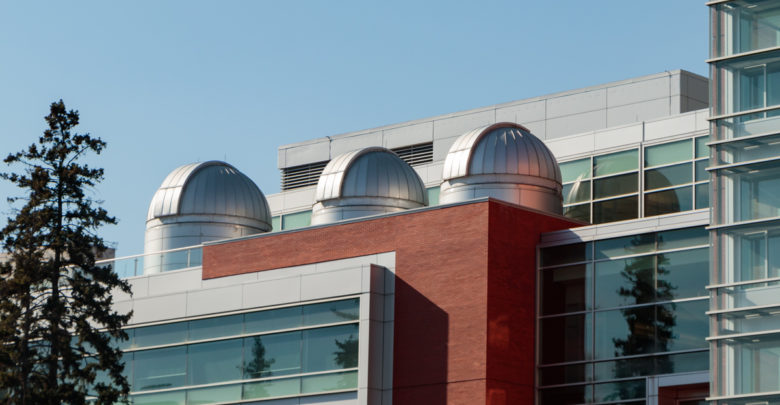U of A’s Department of Physics Astronomical Observatory offers virtual tours for visitors
Sharon Morsink, professor in the department of physics, explained how the observatory has adjusted to the pandemic by operating virtually.
 Christien Ford
Christien FordTo ensure visitor safety, the Department of Physics Astronomical Observatory has adapted to offer limited services such as virtual tours.
The observatory is located on the roof of the Centennial Centre for Interdisciplinary Science (CCIS) building with three telescopes, an indoor display, and classroom. Prior to the COVID-19 pandemic, the Department of Physics Astronomical Observatory was open to the public and student volunteers would run the telescopes.
Grade school groups were also invited to come to the university on a field trip, which would give approximately 20 to 30 kids the chance to get a presentation from a graduate student.
Sharon Morsink, professor in the department of physics, explained how the observatory has adjusted to the pandemic by operating virtually.
“What we are doing right now is we are offering virtual visits for the school groups,” she explained. “We have a video camera we can stick in a telescope, and we have one person at the university with the telescope controlling what you can see.”
Currently, the observatory’s primary focus is giving students hands-on experience with telescopes and astronomy.
“Right now our main focus is training a group of undergraduate students on how to use the telescope,” Morsink said.
Morsink said that the observatory hopes to offer more services in the future, when the pandemic permits..
“[The eventual] plan is to have small groups of maybe 15 to 20 people being allowed to come up on the night and they will get a free ticket and they will have to have a OneCard,” she explained. “We will have to wait a little bit to see how things are going with case numbers and stuff but that’s kind of what we are hoping to do.”
Morsink concluded by saying that she enjoys the student experience and their learning process.
“I’ve always really enjoyed seeing the students start off just learning how to do some basic pointing of the telescope, and really learning how to find difficult objects, and learning to talk to other people about what they are showing,” Morisnk said. “For me it’s fun and important to help students learn their potential to interact that way.”




